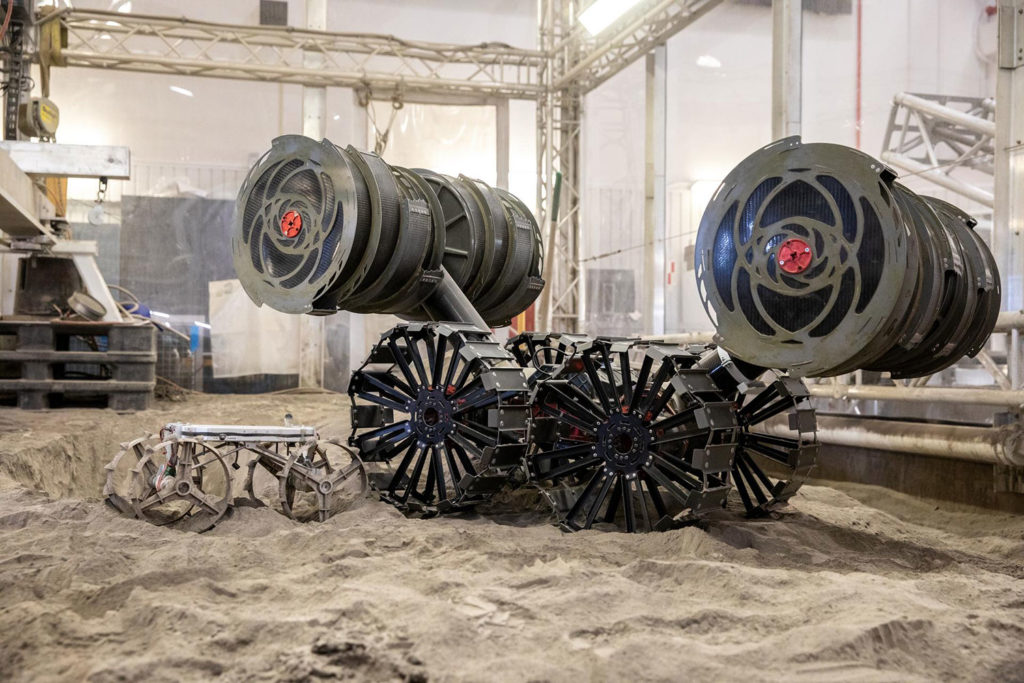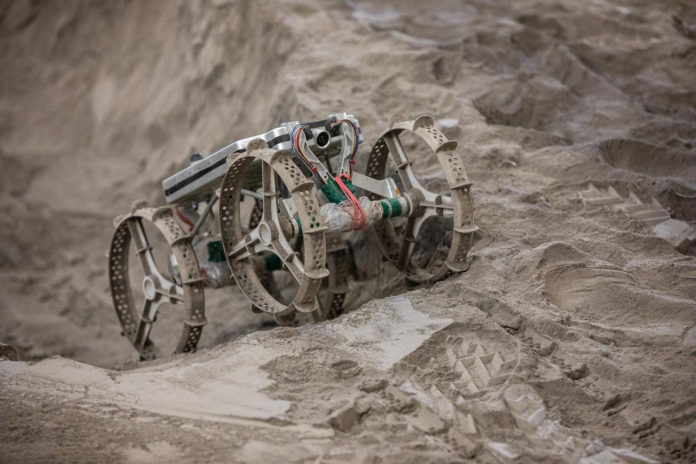The US aerospace agency NASA and Astrobotic Technology have announced the completion of testing the company’s four-wheeled CubeRover. The researchers put the small robotic rover through a series of more than 150 mobility tests over several days to evaluate and improve wheel design.
In the future, such devices will be able to replace large rovers. One of the main reasons is the much lower weight of the payload, which greatly affects the cost of launch. There are already examples of significant weight reduction of devices, such as CubeSat – miniaturized satellite for space research, which typically weigh less than 1.33 kg per unit.
NASA with Astrobotic Technology also seeks to implement such an approach to spacecraft. Astrobotic’s miniature rover began as a concept more than a decade ago with funding from NASA’s Small Business Innovation Research/Small Business Technology Transfer (SBIR/STTR) program. The smallest CubeRover is only about 45 cm long, 48 cm high, 28 cm wide, and weighs up to 4 kg. The rover delivers payloads across the Moon after deploying to the lunar surface. This unique offering allows customers to design payloads using standardized CubeRover interfaces.

During the tests, the shoebox-sized rover was placed in a 120-ton container filled with regolith and dust that mimicked the lunar surface. The CubeRover rolled over dunes of abrasive dust, turned in place, and then trundled up and down steep trench walls within the Granular Mechanics and Regolith Operations (GMRO) laboratory. Experts evaluated the robot’s maneuverability and how its sensor, motor, and power systems operated in the dusty environment.
“CubeRovers are light and have relatively low deployment and development costs. This dramatically reduces flight cost, making CubeRovers excellent platforms for technology demonstration missions,” said Mike Provenzano, Astrobotic’s director of planetary mobility. The rovers’ standardized design creates opportunities to conduct a wide range of missions that will expand science, exploration, and commercial activity on the Moon.
CubeRovers will be the first to demonstrate several capabilities, such as recharging from a centralized power source in a regolith environment, repairing surface assets, and establishing a local communication infrastructure network.
But this is only the beginning of the journey. While CubeRovers passed 150 mobility tests, NASA has plans to conduct over 1,000 more tests before the device is approved to fly to the Moon.
